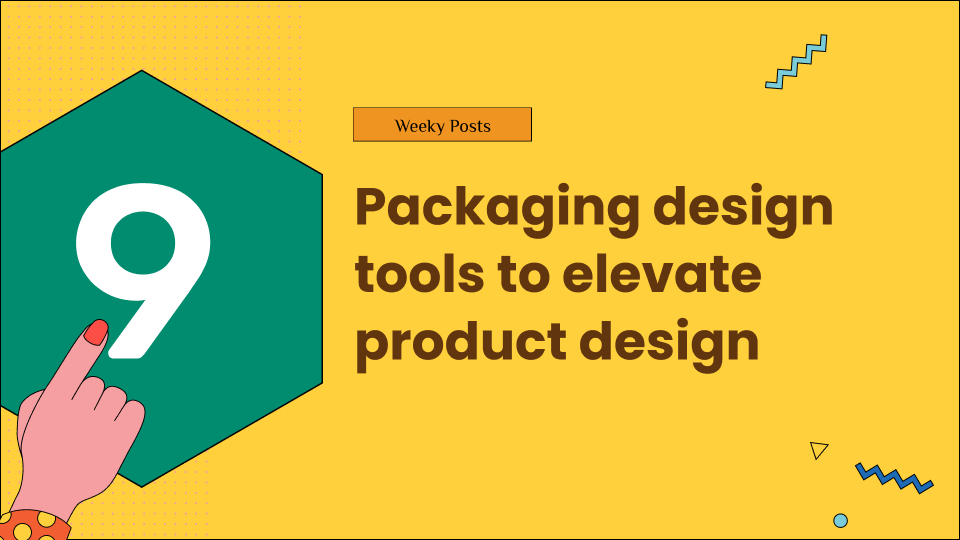How many of you are actively seeking out packaging design tools to ensure the best appearance and aesthetic of your product?
We’ll take a guess and say most of you — and for good reason! According to a 2023 study by Ipsos, 72% of American consumers say that product packaging design influences their purchasing decisions, and 63% have tried a new product specifically because its packaging caught their eye. Packaging isn’t just protection; it’s a crucial marketing touchpoint.
However, that might not be true for a lot of the designers or companies out there. That’s because many of us still believe that the customers don’t even think about packaging design when they buy the product. And we’ll have you know it’s not true.
A great packaging design often works as a marketing trick that targets your psychographics without coming to your notice. For example, when you go to Walmart with your kids, they notice a cookie box with their favorite fictional character and then force you to buy the product.
That’s what’s called branding and a great way to leverage packaging design.
Now you must wonder how they settle for any particular product packaging design? Do they wrap the product abruptly? No, there’s whole market research behind the scene and planning to create the product designs with packaging design tools.
So in this article, we’re going to walk you through some of the best packaging design tools. Let’s start!
Table of Contents
How does product packaging design work?
Product packaging design operates on multiple psychological and marketing levels simultaneously. According to a 2024 study by the Packaging Manufacturer’s Consortium, effective packaging engages consumers through a four-part process: attention capture, information communication, emotional connection, and purchase facilitation.
When consumers shop with a specific product in mind, packaging may seem less influential. However, research from Nielsen shows that 73% of purchasing decisions are actually made at the point of sale, where packaging becomes the critical differentiator. Even for planned purchases, a unique packaging helps consumers quickly locate their favorite products among competitors.
The most effective packaging designs work by:
- Creating visual standout – Using color psychology, unique-to-the-brand shapes, and visual hierarchy to grab attention in crowded retail environments
- Communicating brand values – Reflecting sustainability, premium quality, or family-friendliness through design elements. Considering the latest trend and environment awareness sustainability resonates the most with consumers.
- Delivering functional benefits – Portraying ease-of-use, portion control, or preservation capabilities
- Triggering emotional responses – Evoking nostalgia, excitement, trust, or comfort through sensory design elements
Different demographic groups respond to distinct packaging cues. For example, research from Mintel shows that Millennial and Gen Z consumers are 64% more likely to purchase products with Instagram-worthy packaging, while packaging targeting children incorporates more vibrant colors and character licensing.
Women continue to drive approximately 85% of consumer purchasing decisions according to the Kellogg School of Management, making female-focused design elements particularly impactful in many product categories
7 steps to design product packaging
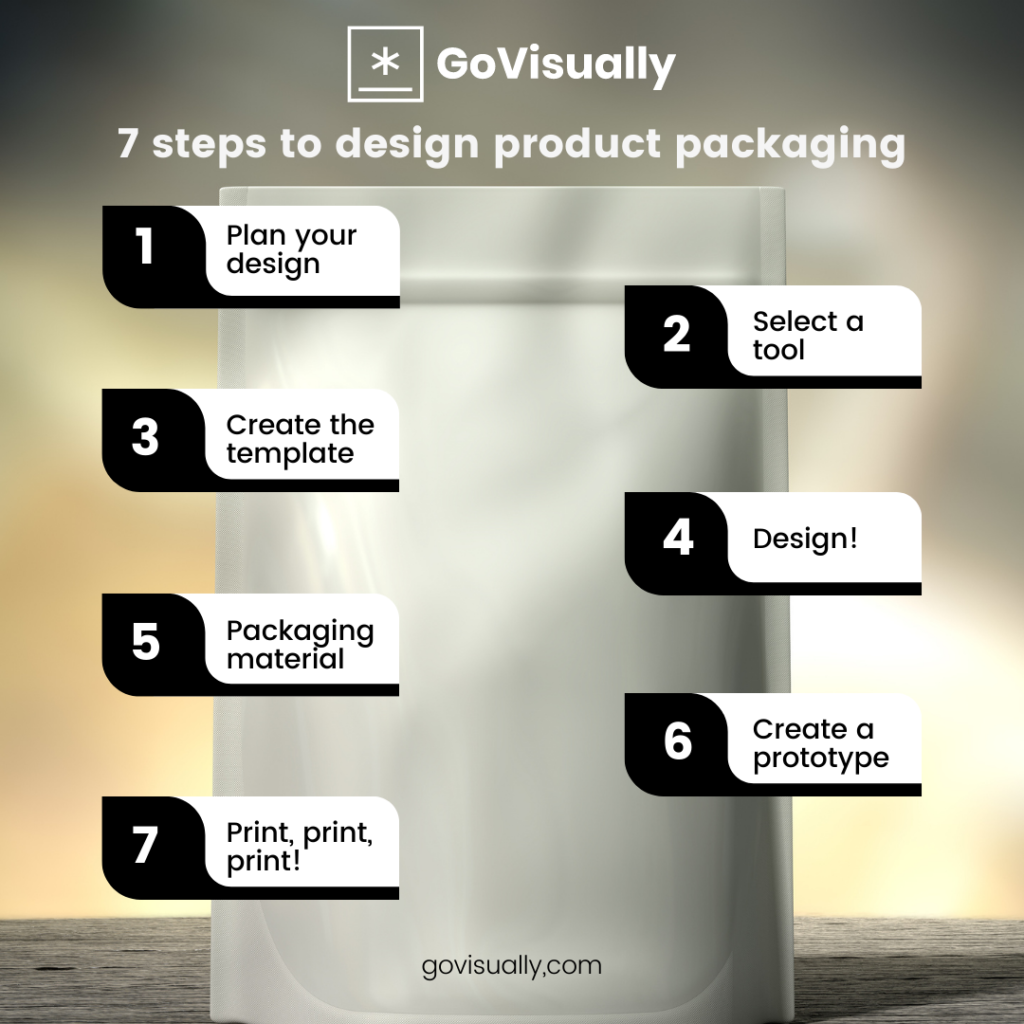
1. Plan your design
When designing your product packaging, the first thing to know is what kind of design you want the product to be wrapped in. This includes deciding whether you want a 2D design or 3D packaging. This stage comes in the last layer of the product, which provides for labeling the product since these kinds of designs showcase the product’s outer layer.
Planning your product packaging design relies on who will use the product? What is the product for, and how will the buyer buy it? After outlining these instances, you need to conduct market research to analyze the need for the product in the market. You initiate the branding or product packaging design process to finalize which segment, demographic, psychographics, and market buying behavior.
2. Select packaging design tools
When you map out the design outline after market research, then comes in the step to decide which designing tool you will use. You need to select the software tools for graphic designing and illustrations. Through these software tools, you can set up a packaging prototype.
For example, you can create or mix the wrapping you want in the design or create the brand’s logo. Also, this step should include what type of product it is to plan accordingly. If it’s about packaging the edible product, you have to mention all the ingredients, expiry date, benefits, and the product image to attract the target market.
3. Create the template
To begin designing, start creating the template step by step. First, bring in the layout and decide the background color. Then you can go about selecting the font style and color. After choosing the designing tool, another step comes in to determine how you want the designs to be seen on the packaging—for example, the logo on the packaging, fonts of the text, graphics on the packaging, and the trademark.
4. Design!
After getting all the things necessary for designing the packaging, you can start with the designing stage and put all the pieces together in one frame. You have already created the product design template, so start adding other pieces into the frames.
This can include how big the outer packaging you want in your product is. For example, when you see bottled water, the packaging design only covers the center of the product. That’s also because customers don’t read the information written on the bottled water.
However, when designing the cake mix packaging, you need to add all the ingredients and steps to cook it. Customers also read such product information to check the nutrition, calories, and any ingredient they might be allergic to.
5. Choose the suitable material for packaging
Next, you choose the suitable material for the packaging of your product. If your product is food-related, i.e., a dairy product, you need to select the packaging material according to the shelf life. Dairy products are usually packaged in aseptic packaging with aluminum foil, paperboard, glass, and polythene.
These materials preserve and increase the shelf life of the dairy products inside with various 6-7 layers. Moreover, if your brand supports sustainability and avoids plastic usage, you need to have a paperboard substitute in the outer layer of the packaging. So, while designing your product packaging on the software tool, you need to keep in mind that printing the paper will hold together the complete final design.
6. Create a prototype
At this stage, you need to partially execute the plan to see if it check all the boxes. This includes creating a mockup or a prototype for a demo. The demo is generally for the brand managers to see if it meets their demand.
However, it depends on the brand managers to decide if they need to see the physical appearance of the packaging design or a simulation. If the simulation part works, you can create a digital prototype, i.e., a packaging design presentation.
The display should show what your final product will look like with accuracy. Moreover, the brand managers can also require some adjustments to be made. So, you should gather all the feedback to design and adjust later on.
7. Print, print, print!
When you get the thumbs up on the prototype from brand managers, it’s time to let the cat out of the box, which means the final execution of the plan. You need to print the final copy and start with the product packaging at this stage.
However, products like dairy need to go through different layers of packaging, and then the last step includes the outer layer of labeling and designing. So, the design and labeling come in after the other layer’s production process is finalized.
What features to look for in packaging design tools?
When selecting a packaging design tool for your product, certain features can make the difference between a good design and a great one. Here are the key features to look for:
1. Compliance Checking Capabilities
The best modern packaging design tools like GoVisually now offer AI-powered compliance checking to ensure your packaging meets industry regulations. According to a 2023 Grocery Manufacturers Association (GMA) report, non-compliant packaging can cost companies up to $10 Million dollars in direct costs only. That’s why you need to look for tools that can automatically scan for:
- Required regulatory elements
- Allergen information verification
- Barcode and QR code validation
- Ingredient list verification
Check out how you can achieve 99.9% product label accuracy using GoVisually’s AI compliance tool within minutes!
2. 3D Visualization and Mockups
Top packaging design software should allow you to visualize your design in three dimensions. This helps you see how your packaging will look on store shelves and gives stakeholders a realistic preview before production.
3. Collaboration features
Collaboration features are going to make the entire review process extremely easy, and efficient in both online and offline setups. These tools not only help in leave direct comments on design but also allow
- Real-time feedback and annotations
- Version control and comparison
- Role-based permissions
- Comment resolution tracking
- Collaboration from multiple stakeholders with no sign-ups at all
4. Material simulation
Advanced tools now offer material simulation to show how your design will look on different packaging materials – critical for accurate prototyping. This helps prevent surprises when designs are printed on actual materials.
5. Integration with Other Design Tools
The ability to seamlessly integrate with other tools in your design ecosystem (like Adobe Creative Cloud, Figma, or project management software) can significantly streamline your workflow.
6. Template Libraries
Access to pre-built templates for various packaging types (boxes, bottles, pouches, etc.) can save significant time in the initial design phase.
7. Multi-format Export Options
Your tool should be able to export designs in various formats for different stakeholders – from print-ready files for manufacturers to marketing assets for your team.
Top 09 packaging design tools
1. GoVisually – An AI-powered label compliance and design collaboration tools!

GoVisually has evolved from being just an online proofing software to becoming an all-in-one collaborative platform for design teams that also offer a full-stack AI compliance review system for your labels and packaging designs.
Key features:
- AI compliance suite: Automatically verifies designs against FDA, EFSA, FSA, and MoCRA regulatory requirements for food, cosmetics, and supplements in one click.
- Keyword and claim verification: Scans for required allergen information, nutrition details, and restricted health claims while flagging potential compliance issues.
- Customizable AI playbooks: Build region-specific compliance checks for US, EU, UK, and Canada markets with different regulatory standards.
- Instant regulatory checks: Reduces label review time from 1-6 weeks to minutes with 90% faster automated compliance scanning.
- Collaborative proofing: Share designs with stakeholders for real-time feedback using intuitive annotation and commenting tools.
- Version Control: Compare design iterations side-by-side to track changes and ensure compliance throughout revisions.
According to our customers, AI Compliance tools have helped them reduce review time by up to 75% and accelerate time-to-market by 50% compared to manual processes.

2. Comply AI by Artwork Flow

ComplyAI positions itself as a label compliance tool focused on providing straightforward compliance checking capabilities for brands with more basic needs.
Key features:
- Basic compliance scanning for label verification
- Line-by-line text analysis with error flagging
- Flexible compliance checks against major market standards
- Library of standard warning statements
- Support for FDA (USA) and FSSAI (India) regulatory bodies
- Template-based text verification for common label types
- Straightforward reporting with pass/fail metrics
ComplyAI is suitable for brands with simpler labeling requirements operating primarily in the US and Indian markets. The platform offers a methodical approach to basic compliance checking without the complexity of more advanced systems.
3. Adobe Illustrator
The adobe illustrator for designing products packaging tops every list because of its benchmark. The tool is standardized in almost every industry for graphic designing, packaging, and labeling. Its vector graphics allow you to be creative with your designs and use geomatics and maths to add more unique features.
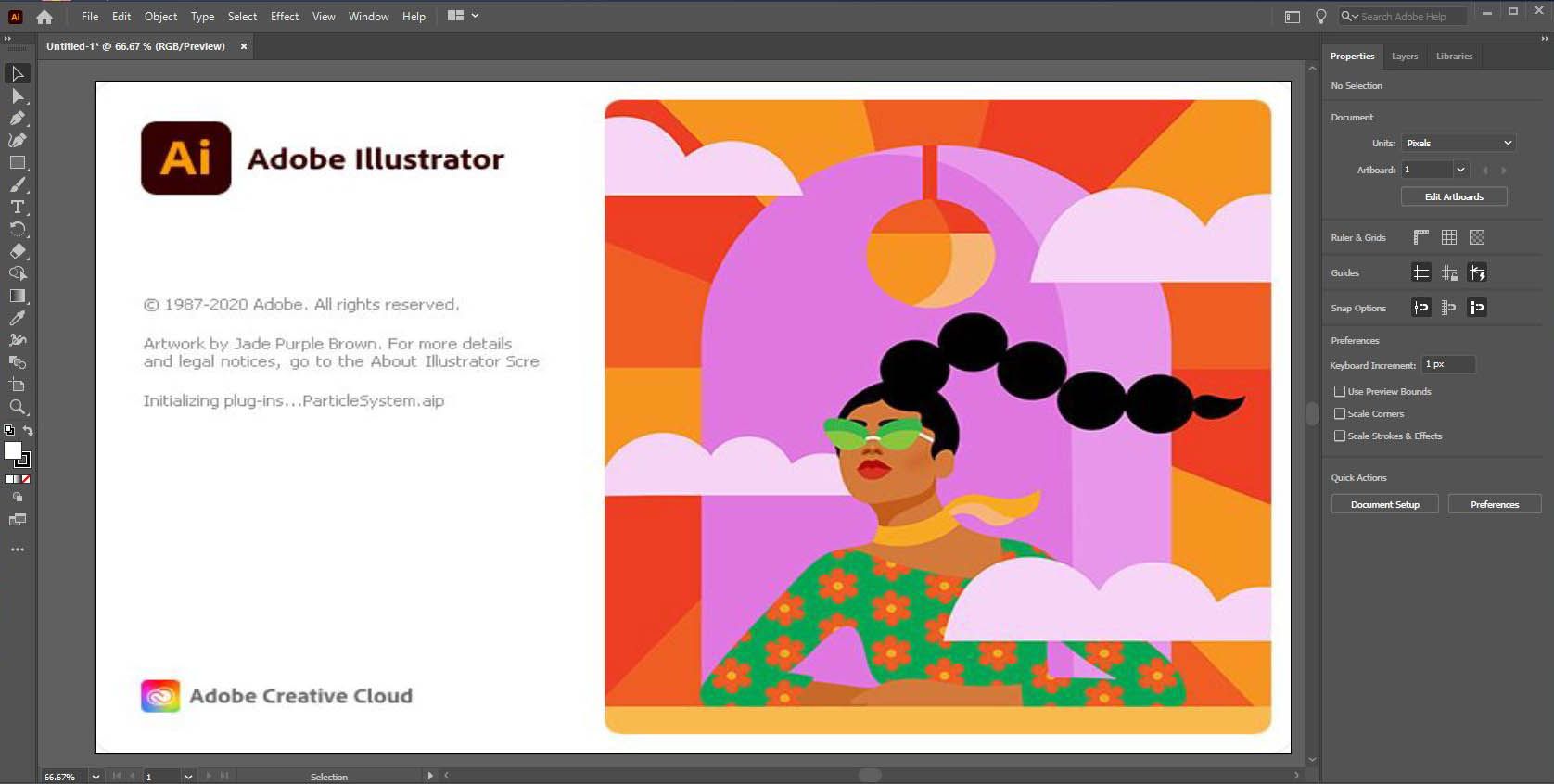
And when it comes to packaging designing options, you will have plenty of options on your plate to work, including extensions, layouts, frames, platelets, you name it, and it’s all there!
Although the tool is very comprehensive to use, getting so many options to work with might overwhelm the amateurs. So, you can start with the beginner option and gradually increase your level with the tool.
Key features:
- Precise vector editing tools
- 3D packaging mockups with realistic material rendering
- Extensive typography controls
- Pattern creation tools
- Packaging-specific templates and dielines
- Integration with the entire Adobe Creative Cloud ecosystem
While comprehensive, Adobe Illustrator does have a steeper learning curve for beginners, but the investment in learning the tool pays off in design flexibility.
4. Figma

Figma lets design teams work together on packaging designs in real-time from anywhere. Its vector networks create flexible packaging designs while component libraries maintain brand consistency across all packaging elements. The growing plugin ecosystem includes packaging-specific tools for dielines, 3D mockups, and print preparation, making it a solid choice for modern packaging design workflows.
Key features:
- Real-time collaboration with multiple designers
- Vector networks for flexible packaging design
- Component libraries for consistent branding
- Prototyping capabilities for interactive packaging
- Plugin ecosystem with packaging-specific extensions
- Web-based platform accessible from anywhere
Figma’s cloud-based approach means teams can collaborate on packaging designs from anywhere, making it ideal for distributed design teams.
5. Packlane

Packlane combines design and manufacturing in one platform with its straightforward 3D packaging designer. You get instant pricing feedback as you adjust dimensions or materials, making budget planning easier. The platform handles small production runs effectively, perfect for product launches or seasonal packaging without requiring large inventory investments.
Key features:
- Online 3D packaging designer
- Real-time pricing as you design
- Custom sizes and materials
- Direct manufacturing integration
- Design templates for common packaging types
- Low minimum order quantities
Packlane is perfect for small to medium businesses looking to create custom packaging without needing advanced design skills.
6.CorelDraw
The CorelDraw is another designing tool for you to be on board with creative designing for product packaging. Although you can use this tool for packaging designing, it still has limited options since it is primarily standardized for illustration projects. That’s because CorelDraw will pretty much get your work done similarly. If you don’t want to get your hands-on adobe illustrator directly, you can use this tool as a substitute.
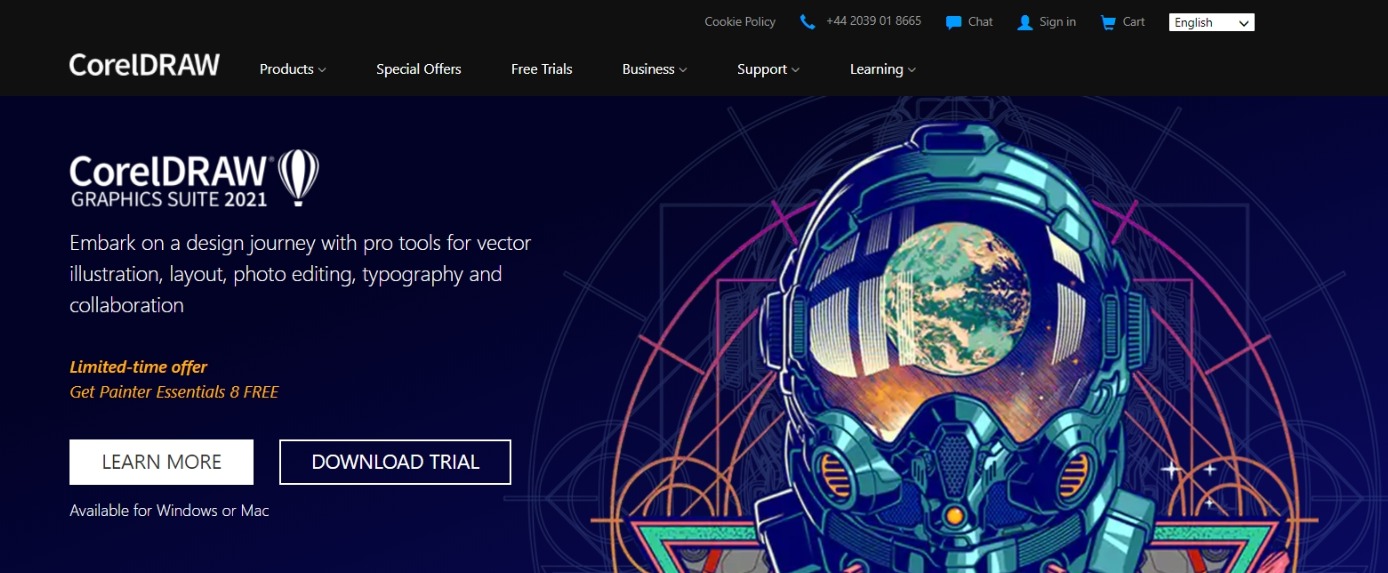
Key features:
- Dieline creation tools
- Advanced color management for print accuracy
- Powerful typography tools
- Barcode generator
- Package mockup features
- One-time purchase option (no subscription)
While primarily standardized for illustration, CorelDraw offers robust packaging design capabilities at a different price point than Adobe products.
7. Inkscape
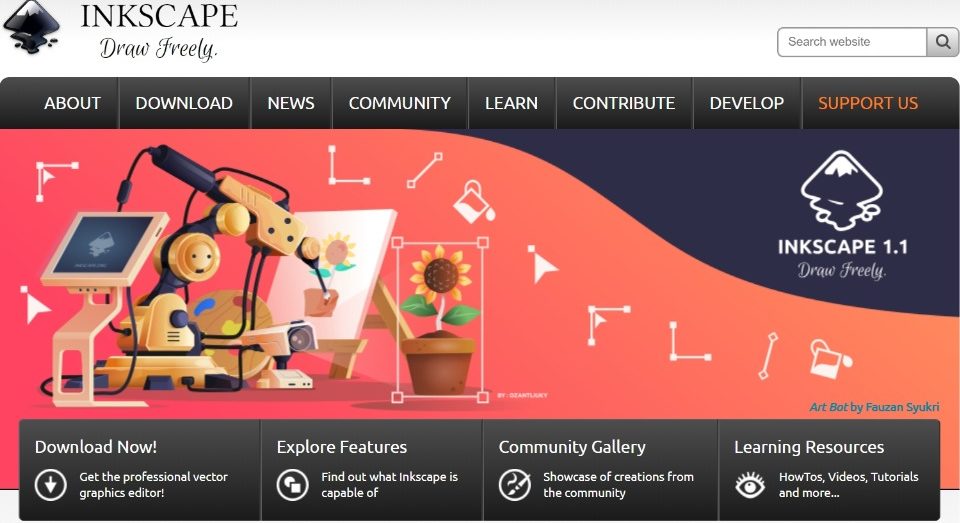
Did you say a budget-friendly designing tool? We’ve heard you! Inkscape is a perfect choice if you have a tight and stiff budget for designing tools. It’s free of cost since it’s open-source software. If you are a developer and designer, you can also contribute your codes to this tool.
Key features:
- Free and open-source vector editor with professional capabilities for packaging design
- Handles complex dieline creation, typography, and illustration needs for product packaging
- Supports SVG format that integrates with manufacturing workflows
- Includes extension system for packaging-specific tools like pattern creation and barcode generation
- Works across all major operating systems, ensuring consistent workflow
- Receives regular updates from an active community of developers
Inkscape is perfect for startups and individual designers who need professional-grade vector tools without the subscription costs.
8. Canva

Canva is an all-in-one design tool. You can design the packaging with over 250,000 templates and extensive color palettes. Moreover, with Canva being a vector program, you can use your expertise to create an infinite number of designs. It is mainly preferred by the graphic designers after adobe illustrator since it’s got all you want for product packaging design! And not only does it check all the right boxes, but it elevates your product packaging design to an upper level.
Key features:
- User-friendly interface
- 250,000+ packaging templates
- Extensive stock image library
- Brand kit for consistent design
- Collaboration features
- Free tier with premium options
Canva is ideal for small businesses and startups that need quick, professional-looking packaging designs without specialized design skills.
9. Affinity Designer

If you ever had your hands on Adobe Illustrator or Adobe photoshop tools, then using the Affinity designing tool for creating product packaging designs is a handy option for you.
Affinity Designer combines vector precision with pixel editing for effective packaging design. The software handles dieline creation while offering typography controls needed for packaging information. Its performance with large, complex files makes it suitable for detailed packaging designs with multiple panels, and the one-time purchase model provides cost predictability.
Key features:
- One-time purchase (no subscription)
- Seamless switching between vector and raster
- Advanced typography controls
- Non-destructive effects
- Comprehensive export options
- Excellent performance even with complex designs
Affinity Designer offers professional-grade tools at a more accessible price point, making it popular among independent designers and small studios.
Wrapping up…
Designing a product’s packaging includes various steps and tools designers need to elevate the game. That’s because the packaging protects the product wrapped inside, defines its overall characteristics, as well as sets an aesthetic appeal.
Reports confirm that 40% of consumers share product packaging on social media when it’s innovative or attractive (according to Dotcom Distribution), the stakes for great packaging design are higher than ever.
Remember, it’s perfectly fine to go through rounds of revisions while finalizing a packaging design. So look for a tool that offers maximum ROI with comprehension solutions like GoVisually. With features like streamlined workflows and seamless Adobe Creative Cloud integration, GoVisually accelerates the time to market by 50%, and achieves a 90% faster process compared to manual checks.
